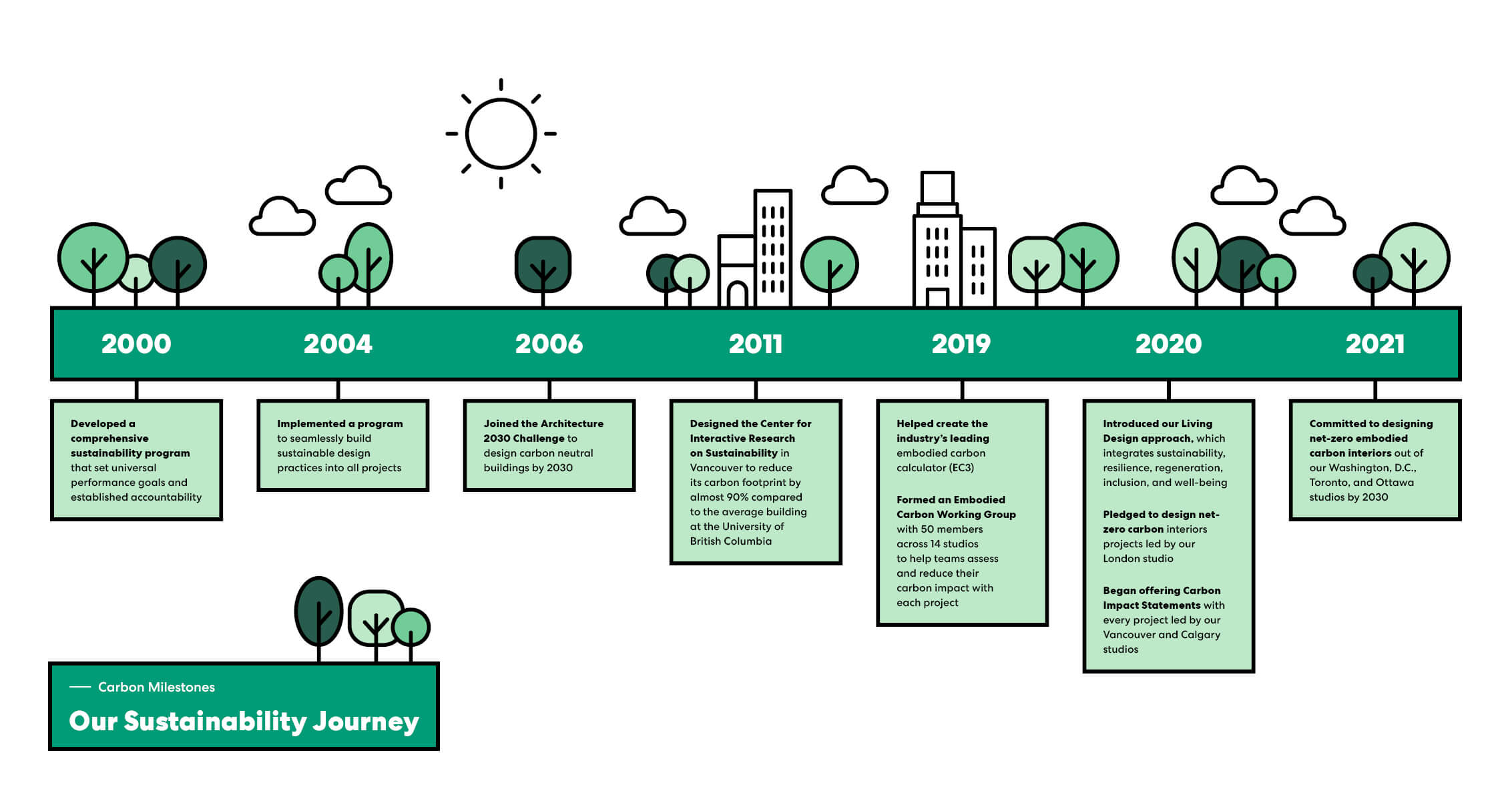在全球流行病,加速的海平面上升和创纪录的高温下,对气候行动的需求比以往任何时候都更为紧迫。 从美国重新加入《巴黎协定》到加拿大,英国和中国,全球各国都在采取行动,以实现零碳净排放为目标。 但是随着建筑业的发展,全球碳排放量的40% ,AEC行业在减少碳排放方面起着至关重要的作用。
当我们纪念2021年地球日时,我们正在采取以下行动:
在全球流行病,加速的海平面上升和创纪录的高温下,对气候行动的需求比以往任何时候都更为紧迫。 从美国重新加入《巴黎协定》到加拿大,英国和中国,全球各国都在采取行动,以实现零碳净排放为目标。 但是随着建筑业的发展,全球碳排放量的40% ,AEC行业在减少碳排放方面起着至关重要的作用。
当我们纪念2021年地球日时,我们正在采取以下行动:
当前,大多数已构建环境消耗的资源超出了其补充能力。
但是,通过沟通和问责制,我们可以达到项目封存碳排放量的程度。

建筑行业仍在建立减少含碳量的最佳实践。 从概念设计到施工,我们一直在设计流程的每个阶段都积极进行生命周期评估(LCA),方法是结合使用业界可用的LCA工具和供应链问责工具,例如建筑计算器中的含碳量(EC3)告知我们的采购决定。
通过做出明智的设计选择并形成全行业的合作关系,我们正朝着使建筑环境低碳化的方向迈进。
Amid a global pandemic, accelerated sea level rise, and record-high temperatures, the need for climate action is more urgent than ever. Countries across the world are taking action—from the U.S. rejoining the Paris Agreement, to Canada, the U.K, and China targeting net-zero carbon emissions. But with the building and construction sector contributing to nearly 40% of global carbon emissions, the AEC industry plays a particularly vital role in reducing carbon.
Here’s what we’re doing to make a difference:
Currently, most of the built environment depletes more resources than it can replenish.
But through communication and accountability, we can reach a point where projects sequester as much carbon as they emit.

The building industry is still establishing best practices for reducing embodied carbon. We’ve been actively conducting life cycle assessments (LCAs) at every stage of the design process, from concept design to construction, through a combination of industry-available LCA tools, coupled with supply-chain accountability tools like the Embodied Carbon in Construction Calculator (EC3) to inform our procurement decisions.
By making smart design choices and forming industry-wide collaborations, we’re on our way to decarbonizing the built environment.